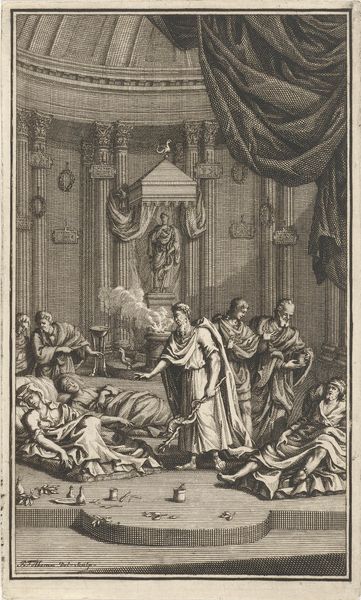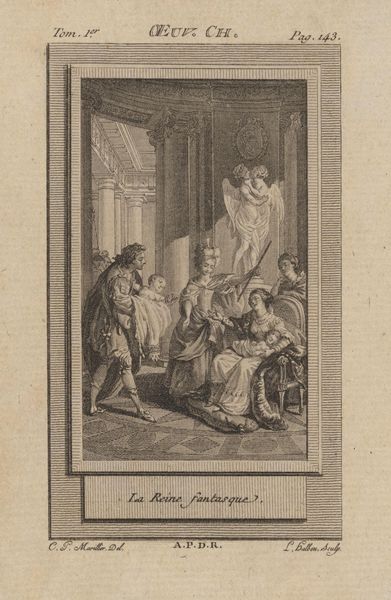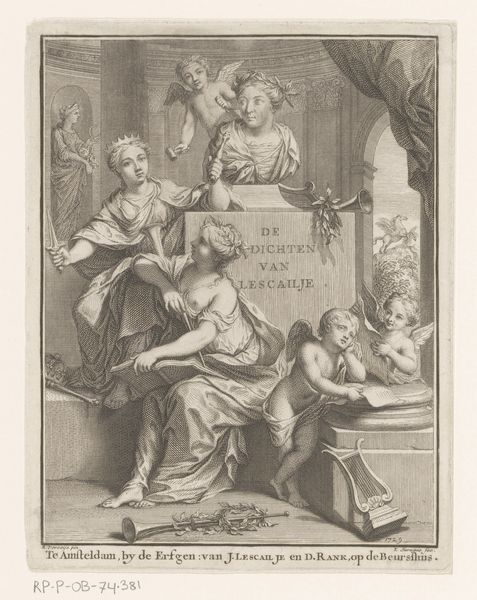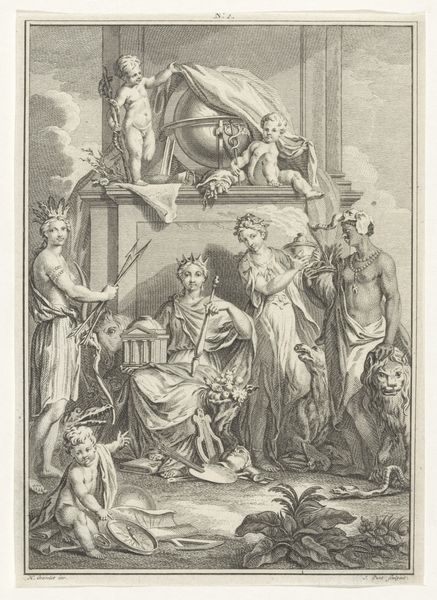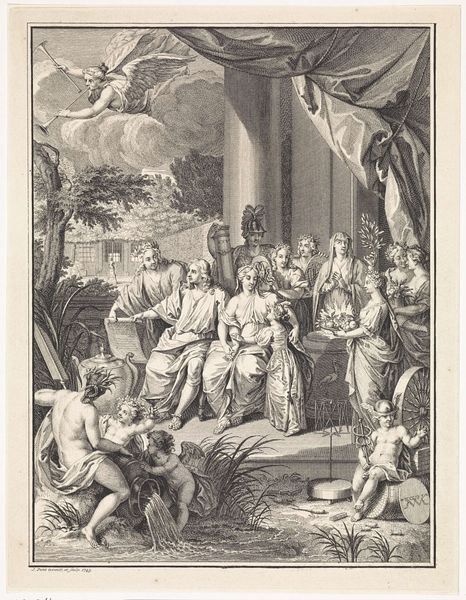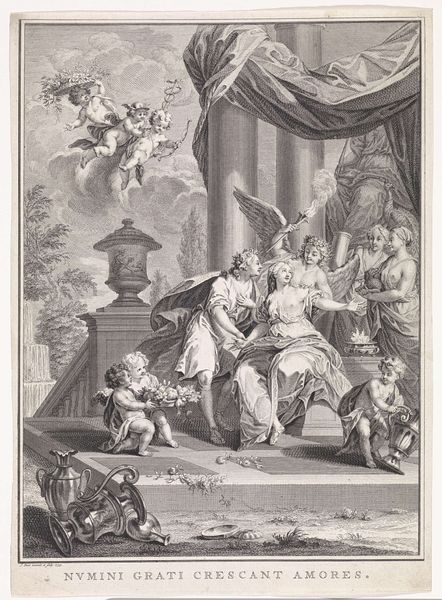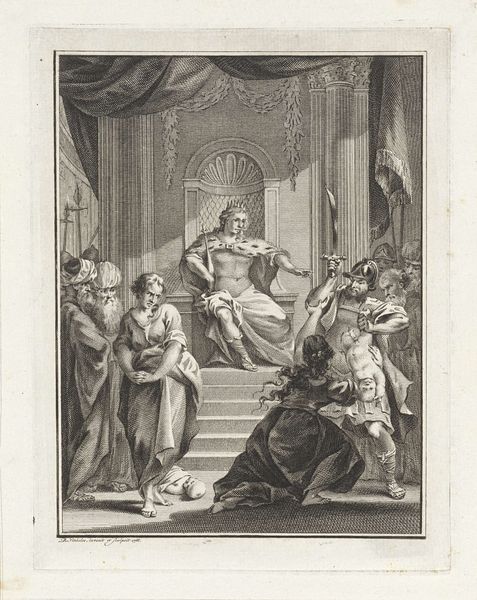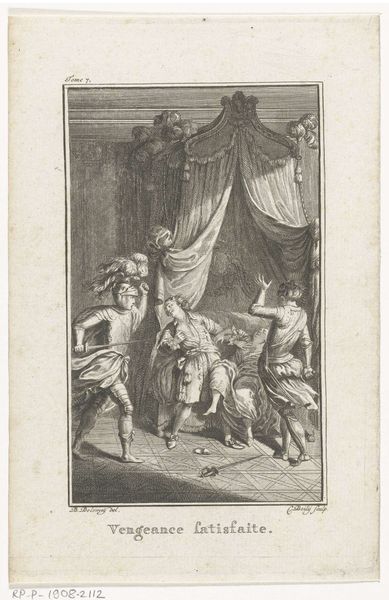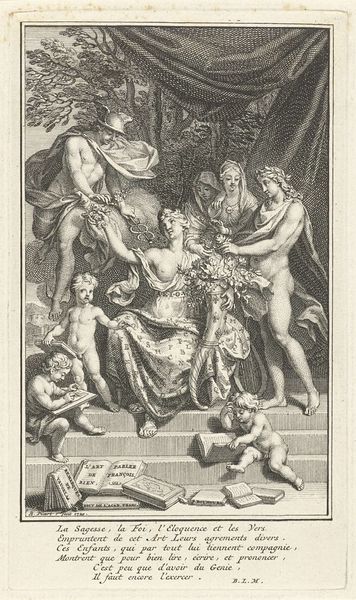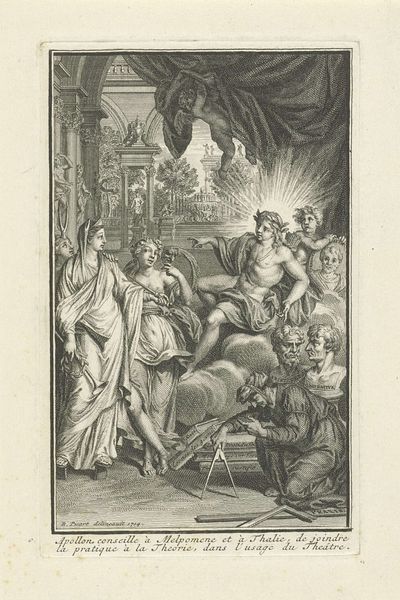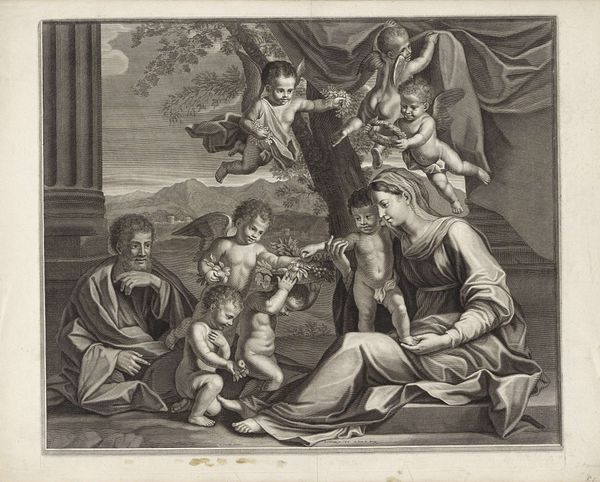
graphic-art, print, engraving
#
portrait
#
graphic-art
#
aged paper
#
toned paper
#
allegory
#
baroque
# print
#
old engraving style
#
figuration
#
line
#
history-painting
#
decorative-art
#
engraving
#
columned text
Dimensions: height 173 mm, width 129 mm
Copyright: Rijks Museum: Open Domain
Editor: Here we have Matthijs Pool's 1715 engraving, "Poëzie met het portret van de dichter Lukas Rotgans," currently residing in the Rijksmuseum. The entire piece feels very theatrical, almost like a stage design for an opera. There are so many figures and symbols vying for attention. What do you see when you look at it? Curator: It feels almost…overwhelming, doesn't it? Pool is really throwing the Baroque playbook at us here, isn’t he? It’s like a celebration, a grand, allegorical tribute to both Rotgans and the art of poetry. Do you see how Pool’s layered the figures—almost dizzying! I wonder, who do you imagine are these supporting actors— the winged cherubs, muscled warriors, and wreath-bearing godesses? Editor: The cherubs, definitely playful inspirations! And the muscled man scribbling... perhaps a personification of labour, working hard on those epic poems? The woman wearing the crown must be the allegorical representation of poetry itself! Curator: Exactly! Look closer: that central female figure is likely representing Poetry. I love how the portrait of Rotgans is captured in the mirror behind her; it feels like a portal, linking Rotgans, as a mortal and craftsman, with a much grander, divine tradition. What I think is amazing is that this whole visual language, which seems overblown to our eyes, was an absolutely mainstream mode of celebrating the poet during that era! What do you make of this? Editor: That is quite striking—the use of symbols to add layers to a poet's legacy! Perhaps it shows how deeply intertwined art and the expression of power really were back then! Curator: Precisely. And perhaps something has been lost as our relationship with those traditions changed, and become, dare I say, much more personal. Anyway, what do we take from all of this? Editor: I guess I understand a little bit better how important cultural and historic contexts are. It helps one see the beauty—as well as understand the meaning—beneath what, at first glance, might be a sensory overload!
Comments
No comments
Be the first to comment and join the conversation on the ultimate creative platform.

